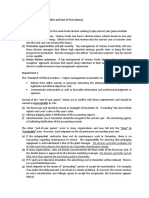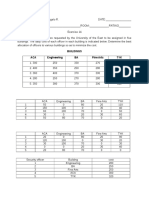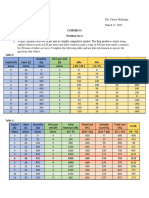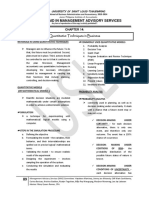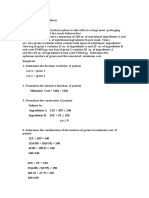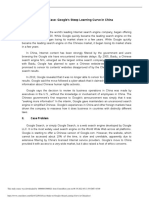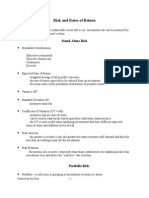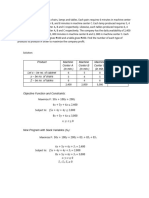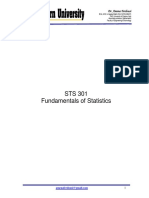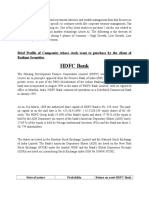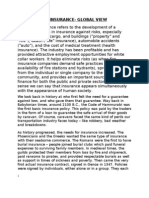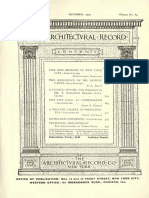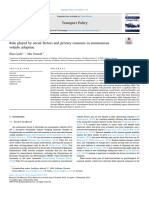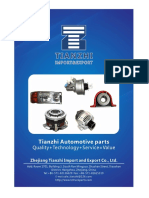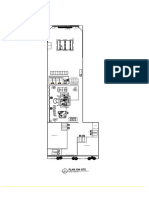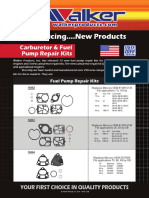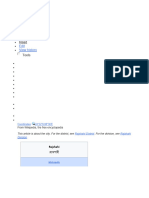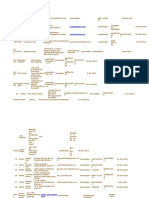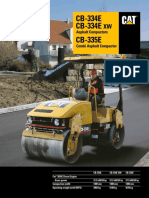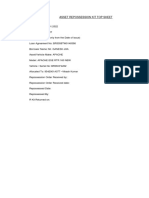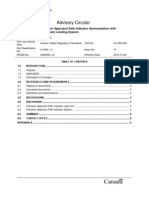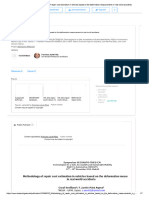0% found this document useful (0 votes)
554 views9 pagesLPP - Problem Number 2
1. A transport company needs to hire trucks to transport refrigerated and non-refrigerated stock. The minimum total cost will be achieved by hiring 50 Type A trucks at $30/km and 67 Type B trucks at $40/km.
2. A school needs buses to transport 400 students on a trip. Renting 4 large buses at $800 each and 5 small buses at $600 each will result in the lowest total cost of $6,200.
3. A store wants to maximize profits from liquidating clothing. Selling 50 packages each of Offer A for $30 and Offer B for $50 will generate maximum sales of $4,000.
Uploaded by
CT SunilkumarCopyright
© © All Rights Reserved
We take content rights seriously. If you suspect this is your content, claim it here.
Available Formats
Download as DOCX, PDF, TXT or read online on Scribd
0% found this document useful (0 votes)
554 views9 pagesLPP - Problem Number 2
1. A transport company needs to hire trucks to transport refrigerated and non-refrigerated stock. The minimum total cost will be achieved by hiring 50 Type A trucks at $30/km and 67 Type B trucks at $40/km.
2. A school needs buses to transport 400 students on a trip. Renting 4 large buses at $800 each and 5 small buses at $600 each will result in the lowest total cost of $6,200.
3. A store wants to maximize profits from liquidating clothing. Selling 50 packages each of Offer A for $30 and Offer B for $50 will generate maximum sales of $4,000.
Uploaded by
CT SunilkumarCopyright
© © All Rights Reserved
We take content rights seriously. If you suspect this is your content, claim it here.
Available Formats
Download as DOCX, PDF, TXT or read online on Scribd
/ 9
